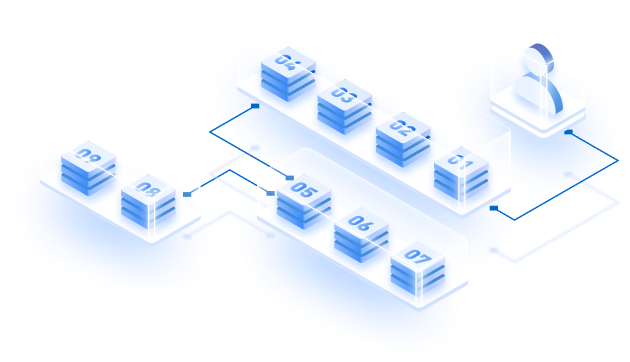For a space built on ownership, crypto is weirdly good at faking it.
Most DeFi platforms today talk big about self-custody DeFi. But behind the curtain? It’s wallets acting like dashboards, tokens locked behind clunky UX, and yield platforms that need centralized bridges just to get in. The dream of owning your financial rails has been sold. But almost no one’s shipped it.
Until now.
R0AR is live on the mainnet with a chain that actually makes self-custody DeFi real. Not just for holding assets, but for accessing staking, DAOs, NFTs, and liquidity — all from a platform where you own every layer. Built on the Optimism OP Stack and powered by Zeeve’s infra, it’s a live, production-grade self-custody DeFi on OP Stack chain purpose-built for the new executive class of Web3—founders, fund managers, and power users who don’t want training wheels.
And this isn’t just a win for R0AR. It’s a blueprint. One that might just rewrite how self-custody DeFi is designed, launched, and scaled in this modular era.
Self-Custody DeFi Was Always the Promise. Never the Product.
The concept was simple: crypto gives you control. Your keys, your coins. No banks, no middlemen, no trust needed. But as DeFi got more complex, the gap between user experience and actual custody widened.
The DeFi boom may be in full swing again, but the architecture? Still stuck in 2020. We see it always, Wallets that require three extensions just to sign a staking contract, Liquidity locked in protocols you can’t exit without bridge tokens, DAO tools that exist on separate frontends, disconnected from your assets, NFTs that unlock benefits — but only via Discord bots or centralized portals, and so on.
What passes for “ownership” is usually a patchwork of dependencies, half-built features, and gas-heavy workflows. That’s not just inconvenient. It’s dangerous. Especially for builders who want to launch products with predictable UX and compliance clarity.
That’s the crack R0AR saw. And they didn’t try to fix it with another tool. They built a chain for self-custody DeFi on OP Stack.
The R0AR Chain: DeFi, But With Actual Ownership
R0AR is not a wallet company. It’s not an NFT project. It’s not a DEX clone. It’s a vertically integrated self-custody DeFi on OP stack — optimized for custody, composability, and scale. One that lets users do what they’re supposed to be able to do in DeFi: hold, earn, govern, trade, and build — without needing a permission slip from an interface or a centralized bridge.
This architecture of self-custody DeFi on OP Stack empowers applications to natively integrate ownership features into their contracts.
Here’s what all makes the R0AR chain different:
- An OP Stack Foundation: Built on Optimism’s modular rollup framework, R0AR inherits Ethereum-grade security with low gas, fast finality, and cross-chain token mobility.
- Self-Custody First: The R0AR Wallet is already in live beta across Android, with a browser extension now live for Chrome and Brave. iOS is next, along with built-in WalletConnect.
- Chain-Native Staking & Rewards: $1R0R — the R0AR ecosystem token — powers everything from staking and LP incentives to governance and access layers. On-chain vaults handle it all — no third-party sites needed.
- Programmable NFTs & Access: The Executive R0AR Society (ERS) NFTs aren’t just profile pics. They unlock DAO voting, DeFi perks, metaverse spaces, and future rewards — all natively integrated with chain logic.
- Launch-ready Ecosystem: From SDKs and analytics to cross-chain bridges and token launchpads, builders get a ready-made toolkit for creating their own products inside the R0ARverse.
Their full-stack strategy includes NFT infrastructure, DeFi incentives, staking modules, a research and learning platform, and even proprietary ratings and analytics tooling that mirrors real-world models like Moody’s.
These are not just a few collections of integrations. It’s a composable, custody-first economic stack that lets users own every layer of their interaction. This is chain-as-product — architected for a world where users and creators demand control.
Why OP Stack — and Why Now?
They looked at all options. Solana gives speed, Cosmos SDK gives full sovereignty but lacks interop. Arbitrum Orbit had cheaper costs, but didn’t have the OP Stack readiness.
For an ecosystem like R0AR, which combines trading, NFTs, DeFi, DAO tooling, and wallets, OP Stack gives them the flexibility and credibility to ship confidently. They bet on the future where every chain is interoperable by default, liquidity moves natively, and Ethereum remains the base layer for shared truth.
And OP Stack gave all of them:
- A modular design to bake in self-custody DeFi on OP Stack chain-level logic.
- Access to shared infrastructure like fraud proofs, governance tooling, and fast dev cycles
- A path to future-proof interoperability without compromising sovereignty
And critically, it gave them alignment with Ethereum. R0AR didn’t want to live off L1 forever. They wanted to graduate to their own economy, with all the cultural values of ETH, but none of the cost or scalability trade-offs.
The Role of Infra in Pulling This Off — Why They Needed Zeeve
Any chain can be fast on paper. But production-grade DeFi needs more than TPS statistics. It needs uptime. Monitoring. CI/CD. Rollup observability. Crucial integrations. Compliance infrastructure. A real plan for what happens after the mainnet tweet.
That’s why R0AR needed a reliable infrastructure partner to operationalize their OP Stack Layer 2 with full control, high availability, and modular upgrade paths. They chose Zeeve to manage the rollup lifecycle with production-grade execution and security.
Zeeve helped provision and scale the R0AR chain with:
- Full-stack OP Stack deployment
- Dedicated environments for testnet, staging, and mainnet workflows
- Integrated faucet, explorer, and RPC infrastructure
- Upgrade-safe CI/CD pipelines and developer tooling
- ISO 27001 & SOC2 Type 2 compliant infra with 24×7 monitoring and alerts
- Governance and rollup performance dashboards
- TraceHawk Explorer for live rollup health monitoring
With a focus on speed, uptime, and maintainability, the chain was built to support R0AR’s full ecosystem — staking, NFTs, liquidity, and DAO tooling — from day one. Zeeve Rollups-as-a-Service handled the infra. R0AR delivered the experience.
Some Words for the Builders:
Every time the market expands, we talk about UX. We talk about fees. But in reality, the reason people come — and the reason they stay — is trust.
And trust comes from control.
DeFi platforms that don’t take self-custody seriously aren’t just ignoring a feature. They’re forfeiting the one thing that made crypto different in the first place.
The era of DeFi, where “connect wallet” is the best we can do, is over. R0AR knew that. And with their OP Stack L2, they raised the bar a little higher.
If you’re building the next wave of self-custody-first apps, RWA protocols, or a DefAI application, you’ll need a rollup infra partner who doesn’t just get the tech but gets the mission.
Zeeve is that partner.
Reach out to us, let’s build your chain next!



